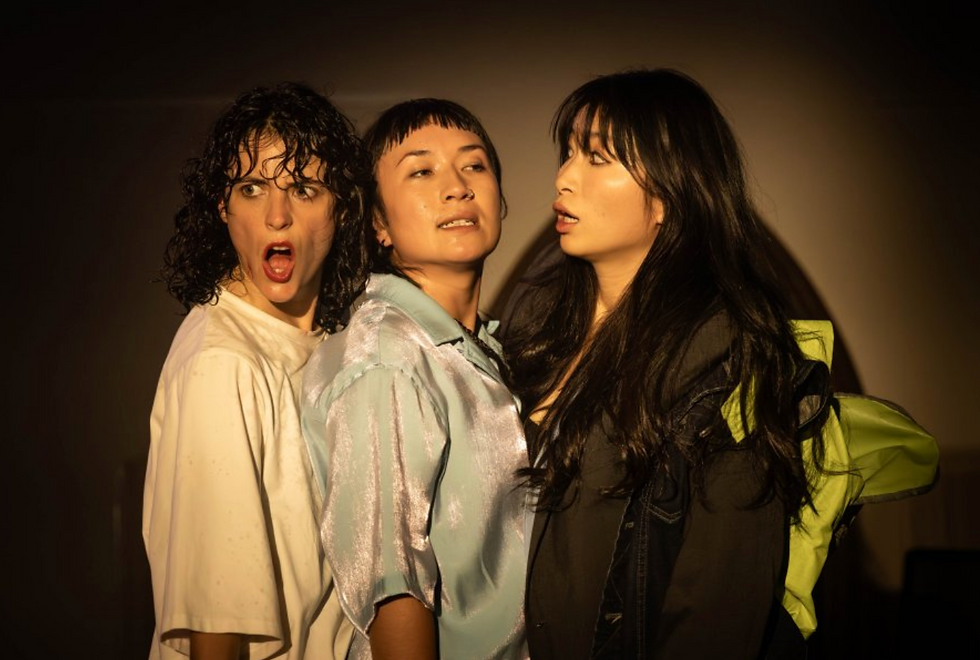Review: Star-Spangled Banter - Online - Melbourne Fringe Festival
- Theatre Travels

- Oct 18, 2021
- 3 min read
Review by Millie Bull
Star-Spangled Banter starts with an engaging premise: that the dancing body can be used as a tool for analysing and critiquing the world around us. Presented at the Melbourne Fringe Festival, this experimental project by dancer Jonathon Homsey is described as ‘an embodied literature review of Dr Phillipa Rothfield’s Dance and the Corporeal Uncanny’. It is a conceptually ambitious piece of work. ‘This solo performance’ the festival guide claims, ‘creates a vocabulary of somatic oxymorons…[and] unravels how cultural and political phenomenons sit within our bodies’. As someone who is mesmerised by contemporary dance, but know very little about its history or its politics, I was compelled to see how Star-Spangled Banter would deliver on its bold promises.
Like many performing art festivals, The Melbourne Fringe Festival is online this year, so the show began when I pressed play. The performance opens with a static shot of Homsey centre stage in an empty theatre. As the opening bars of the American anthem began to play, the dancer moved his body rhythmically to the music. Subtitles along the bottom of the screen read: ‘When I think of America, I think of Whitney Houston’. This was a reflection of what was to come. As Homsey danced to anthems from Auld Lang Syne to Advance Australia Fair, subtitles gave meaning to his movements. Often these subtitles were quotes from Rothfield’s text (“Although discipline, training and selection equip the body for cultural reproduction, skill can be deployed against the cultural grain”). But other times, they were Homsey’s own musings (“I draw on my kinaesthetic literacy to interrogate my bodily interactions with dance”).
If you think this sounds a little academic, you’re right. At times, I felt disoriented by the intellectual content of this performance. I’m no stranger to theories of embodiment, having read thinkers like Erving Goffman and Judith Butler at university. Yet, as different quotes from Rothfield’s book appeared on screen in rapid succession, my mind began to reel. There just so much process. However, the saving grace of this performance is the rich seams of humour that tempers the academic theory. Homsey is disarmingly funny and uses his wit to keep his audience hooked in when their attention might otherwise be waning. Consider one moment when the subtitles read: ‘I am about to perform kinaesthetic irony. I question if this is actually ironic. I wonder if Alanis Morrissette’s Ironic is ironic’. Or another, when they read ‘I aim to embody the multiplicities of culture within my body. I aim to get myself (em)bodied like Beyoncé’. Homsey isn’t naive. He know this piece is hard work and I laughed out loud when, towards the end of the performance, the captions read: ‘Does this make sense? Does contemporary choreography make sense?’.
Given that I have always considered dance to be an emotional art form, I found it eye-opening to consider it in such a cerebral way. Dense with meaning, I believe that Star-Spangled Banter is the type of performance that would reward those who watched it more than once. There is so much to unravel here, in the rich web of ideas that Homsey has constructed between theory, movement and music. I have great admiration for Homsey, as a theatre-maker, as he has not pandered to his audience by simplifying his intellectual ambitions. Instead, he has served up a challenging provocation that demands viewers wrestle with new ideas. As far as theatre goes, this piece is not those who are uncomfortable with wading through a little confusion. But ultimately, when it comes to fringe theatre, don’t we hope to watch things that will carry us outside our comfort zones?

Image Supplied




